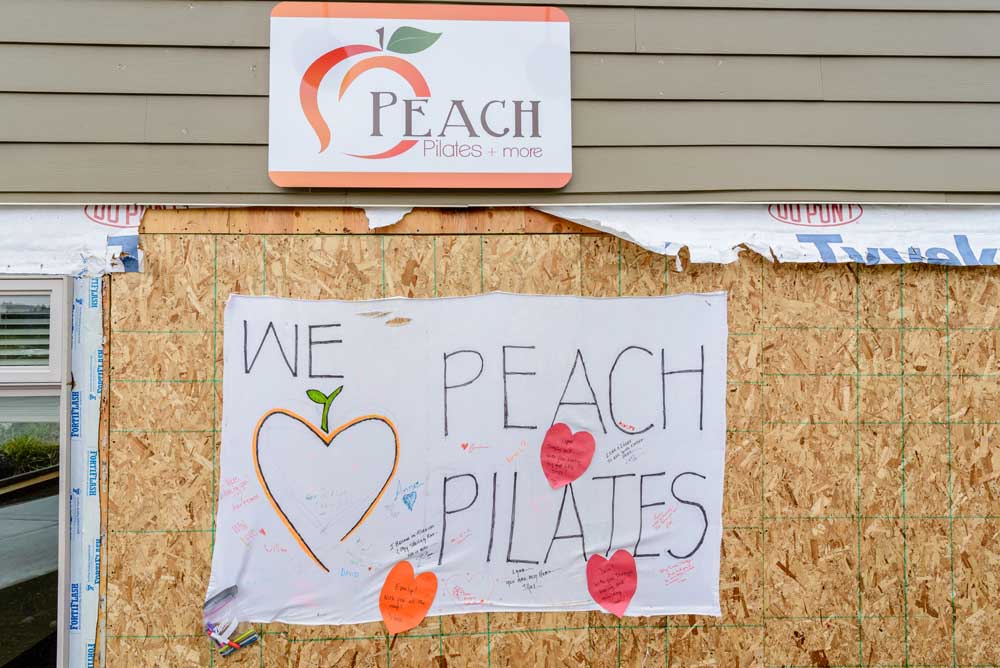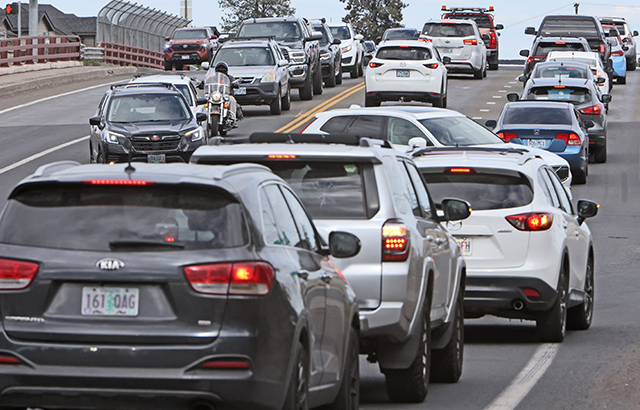Mind, Body &
Published 12:00 am Saturday, September 6, 2014

- Mind, Body &
When Julia Barberich stuffed her basketball shoes into the back of her closet, she thought she might be walking away from the sport forever. The Bend teen had grown up dribbling and shooting, her spot on Summit High School’s basketball team the culmination of more than 10 years of practicing and playing. So it was with a heavy heart that she accepted the fact that she simply couldn’t bear the physical pain she suffered while playing any longer.
Two injuries resulting in two herniated discs, which exacerbated the complications of a degenerative disc, meant Barberich had more lower back pain than she could tolerate.
Trending
“I just couldn’t play anymore,” she said quietly.
When Barberich began pursuing physical therapy, her therapist suggested she try Pilates. It just so happened that the family’s neighbor was a Pilates instructor.
Lynn Dalquist was immediately invested in helping her young neighbor recover from her injuries and overcome her pain. Keeping Barberich in the comfort of her own home, Dalquist began working with her on a daily Pilates routine.
“The PT had suggested Pilates because it was about recognizing that something was wrong in the integrity of the muscles,” Dalquist explained. “It was about fixing it instead of bandaging it.”
Dalquist understood the situation intimately, having first been introduced to Pilates herself after a debilitating injury. Despite her lack of interest after her first exposure to the practice, Dalquist stuck with Pilates in her own rehabilitation, ultimately discovering a personal passion that eventually lead her to open her own studio — Peach Pilates.
Peach Pilates opened its doors in November 2013, bringing two women’s dreams to reality. Three months after the business launched, Dalquist and her associate Julie Watts were overwhelmed by the participation and profound support the new studio had quickly elicited.
Trending
Their success undoubtedly relates to a level of passion that’s inspiring and stirs intrigue even in someone who, like Dalquist in the very beginning, might think Pilates as a form of exercise is extremely subtle.
“I walked out of my first class and thought to myself, ‘I will never do that again.’ I was so bored,” Dalquist recalled. But as a teaching and playing tennis pro, she wasn’t ready to put her racket in the closet. “I didn’t want to just fizzle out.”
Dalquist was accustomed to intense physical training and Pilates was simply a departure from that program. But within a couple of sessions, she realized the change to her training regime was extremely positive.
Through Pilates, Dalquist began to understand her body and why it wasn’t working.
“I was completely imbalanced,” she explained. “I had so much isolated strength from playing tennis and I had been getting away it, but I wasn’t going to be able to continue that way.”
Dalquist was soon able to begin coaching tennis again and found that she was taking what she learned in Pilates and introducing it to her students.
“I would tell these young players that if they could incorporate this into their lives now, then they wouldn’t end up injured like I was when they were my age,” she said. “I really wanted to be able to help young athletes play their sport for a long time, to prolong whatever their passion was.”
Through Pilates, Dalquist saw that she could teach more than just how to master a backhand; she could teach her students how their bodies work.
“As a teen you know your body is your body and you know what it can do, that it can throw a pitch at record speeds maybe, but you don’t think about why it can do that,” Dalquist explained. “The first time you question that is when there’s an injury. And maybe you sail through until you’re 45 before it hits you.”
Dalquist believes incorporating Pilates into a training program can help ensure that type of life-altering injury never happens, and she’s particularly passionate about helping young athletes prevent injuries.
“Pilates is intelligent movement. It’s mindful movement. I believe that with our youth there is an absence of awareness of what our body simply does,” Dalquist said. “Pilates creates and/or increases body awareness and the relationship of it to our mind and thus helps guard against injury. As (a Pilates) instructor I am not going to teach an athlete the mechanics of the game, my job is to teach them efficiency and awareness.”
Pilates is often thought about as building core strength, and while that is at the center of the practice, it’s only part of the picture.
Through a series of exercises from mat work to routines that incorporate equipment such as Pilates rings, stability balls, flex bands and foam rollers, as well as the Reformer, Pilates builds a stable base of support. While the muscles that wrap around the hips and mid-back engage, it strengthens not only those muscles but also the mind-body connection — creating muscle memory so that during activities or sports those muscles fire automatically without having to even think about it. While strengthening, Pilates also creates flexibility and lengthening of the muscles, which in turn support the body’s joints.
The integrity Pilates builds into the body’s muscles can benefit everyone in everyday movement. It supports posture and mechanical efficiency, and it creates body awareness. In sports it creates balance, countering the overuse of certain muscles which is inherent when the focus is on a single activity, a problem Dalquist sees often in youth.
“There is so much pressure on young athletes because with them it is such a focus on a singular activity,” Dalquist emphasized. “They practice and play all year round — essentially only working and training the muscles that relate to that activity and leaving the rest out to lunch. That lays the groundwork for injury.”
Summit High School student Cole Chrisman credits Pilates with helping him avoid injury. As a golfer and a soccer player, Chrisman is an active athlete, but it wasn’t until he started classes at Peach Pilates that he began really noticing an increase in his strength and flexibility.
“At first I thought it was a little girly,” he confessed. “But then after just a couple sessions once a week, I noticed I was getting more flexible and stronger in my core. I’m a small guy so I don’t hit the golf ball very far, but Pilates gave me more strength in hitting.”
Chrisman said he has also noticed how much better running feels with his increased flexibility.
“It has definitely been helpful in preventing me from getting injured because I’m more flexible,” he said. “And it’s a lot of fun, especially because I do it with friends.”
While Pilates is a valuable athletic tool, Dalquist emphasizes that it also has an emotional element. Through donating time to teach Pilates classes at area schools, she found herself face-to-face with a young lady who reminded her about that important part of the picture.
“She came up to me and said, ‘I’m not very good at sports, but I can do this!’ … That is the other piece that I just love. Not every young one is going to be an athlete, but they all still want to belong and to feel good about themselves. Pilates integrates self-esteem. It gives these young kids self-confidence.”
For Barberich, it gave her her life back.
“I used to not even be able to stand up for very long without being in major pain,” she said. “Pilates was totally new to me, but right away I noticed it helping me.”
Within a couple months of working with Dalquist, first in her home and later at the Peach Pilates studio, Barberich had rebuilt her strength and was able to start practicing and playing basketball again without any pain at all.
“I completely owe that to Pilates,” she said.
And although she’s not planning to pursue basketball right now, she’s thrilled to just be pain free in all the activities she likes to do.
“I can really do just about anything now, and that’s why I recommend Pilates to everyone — because it can change your life. It completely changed mine.”








